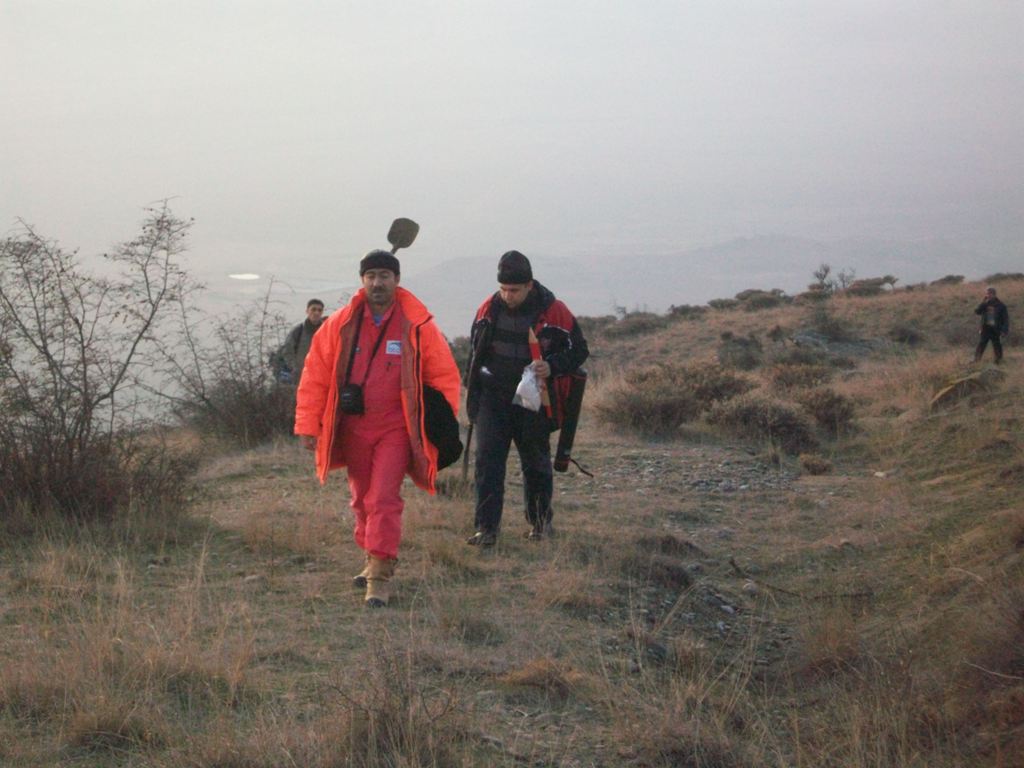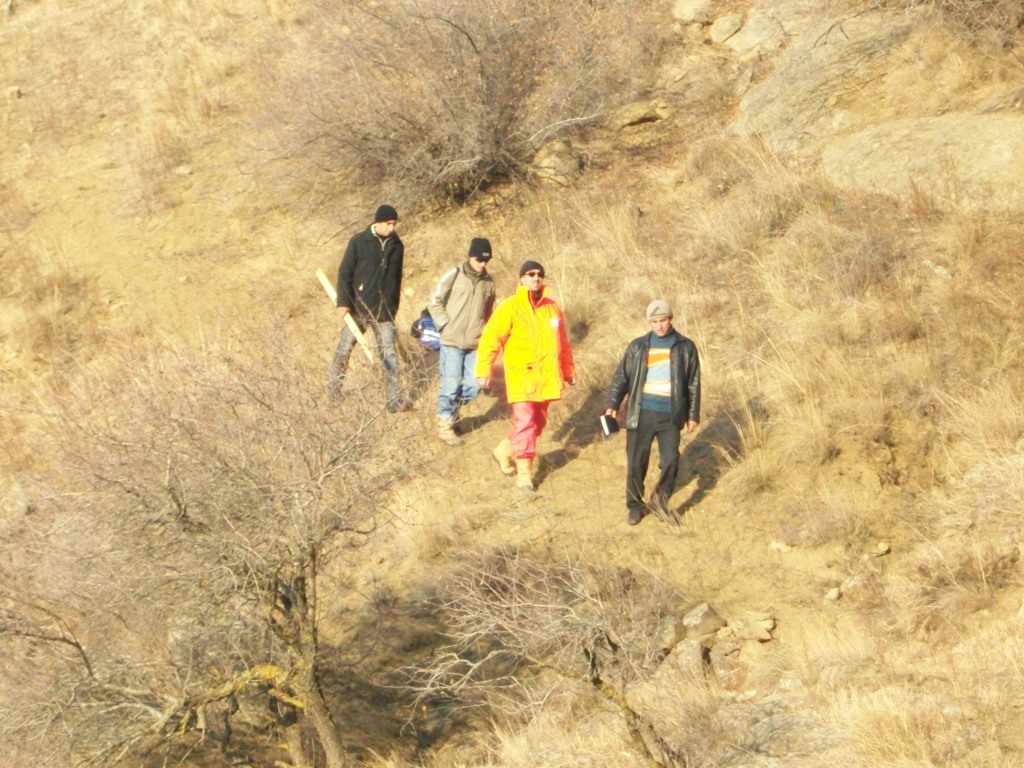In order to verify the information about the existence of ancient graves in the territories near to the “Keshikchidagh” state historical and cultural reserve provided by its employees we traveled to this region in 24-25 June, 2011. This area is bordered by “Keshikchidagh” reserve in the north and the valley called “Karvandarasi” (Karvan valley) in the south. The structure of the area is mainly plain. The area is used as pasture. The information submitted by employees of the reserve has been approved. Indeed, ancient graves were revealed in this area. The graves consisted of kurgans (tumulus) covering the several hectares of area. At the present moment it was impossible to determine the number of kurgans because of height of grass and being of kurgan coverings in the sama elevel with modern land surface. However, dozens of graves of kurgan type were revealed here. The creation of artificial lakes in the area for cattle-breeding caused the destruction of the monuments of ancient graves.
The diameter of coverings of kurgans sometimes reaches 10-12 metres. Kurgan coverings consist of river stones. Excavation works were carried out in one of them to determine the period of kurgans. In the revealed grave chamber in the center of the kurgan animal bones found cell Kurgan graves, 2 earthenwares were found. Human skeleton was not found in the grave. Human skeleton was not found in some grave monuments of Khojaly-Gadabay culture spread in the western part of Azerbaijan. The kurgan that we excavated is one of this type of graves. According to the found ceramic wares kurgans can be attributed to the Late Bronze-Early Iron Age – to the end of the second millennium BC.
Several kurgans have been discovered approximately 5 km to the east of the Boyuk Kasik settlement. The difference of these kurgans from the ones near Keshinchidagh was their higher coverings (nearly 2m) and their bigger volume. In one of them Upper Paleolithic tools made of obsidian was found at the bottom of covering. It seems that here existed ancient human camp in the Stone Age, kurgans were built in the Bronze Age. Stone Age tools were thrown in and mixed while building the covering of this kurgan.
To arrange the protection of all these discovered Bronze Age kurgans it is advisable to include them to the area of the “Keshikchidagh” state historical and cultural reserve.
ANAS Institute of Archaeology and Ethnography
Deputy Director on Scientific Affairs: N.A.Museyibli





